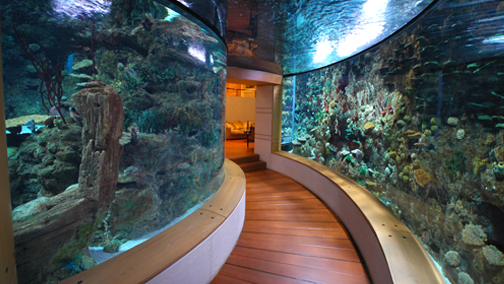
In the first installment of this series I gave you a quick glimpse of some of the awesome Mega Home Aquariums that have been built-in the Middle East over the past decade. In this final article of the series, I will provide a little more insight into how these large aquariums are created.
Planning and Design
Building a 500,000 gallon aquarium is not an endeavor that you just jump into. Often times, the design and planning stages of such large projects can take 2 years or more. The process begins with a series of conceptual drawings which are presented to the client for review, revision and hopefully approval. This stage is then followed by the creation of a scale model to provide the client with a miniature representation of the overall aquarium including the placement of rockwork and other themed elements.
During my time at Issham Aquatics, we often teamed up with a talented American artist who helped put our collective aquatic vision onto paper. We would have great brainstorming sessions whenever he would visit the Middle East from his home in Oregon. From a 20 ft. tall aquarium on a yacht to shark tanks, the more grand and over the top the ideas, the better! Not all of the designs we penned made it to construction, but many did.
- Conceptual design of Private Palace Aquarium
http://isshamaqua.com/concepts.html
Concept to Creation…
Construction and Commissioning
Building residential aquariums on a massive scale takes serious logistics, coordination and project management. No one company in the world has the capability to pull off a 500,000 gallon aquarium on their own. As such, we would utilize a number of international specialty subcontractors for specific items. Acrylic would often be sourced and installed by Nippura Co. in Japan. They are the same company that supplies acrylic for the Georgia Aquarium and other public aquariums worldwide.
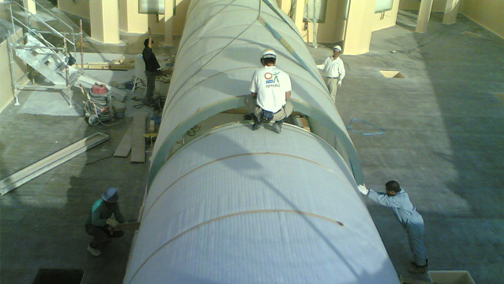
Technicians from Nippura install a large acrylic tunnel at a Royal Palace in the Middle East http://isshamaqua.com/construction.html
These massive acrylic panels, tunnels and cylinders would be shipped to us in special sea freight containers and installed by Nippura Technicians. The method and material used to achieve their almost invisible acrylic bonds is a closely guarded proprietary secret.
These large closed systems are generally densely stocked with large predators that produce copious amounts of waste. To filter these huge systems 50hp pumps and PVC or HDPE pipes of 14″ diameter or more are used. We often teamed up with International Aqua-Tech from the UK to design and build the complex filtration systems. They build some of the best filtration systems I’ve ever seen and were among the companies to employ SCADA (supervisory control and data acquisition) controlled aquarium systems. They also use a cool blue coloured PVC and HDPE material to build much of their equipment.
Animal Stocking and Maintenance
Collecting and quarantining thousands of fish for a single exhibit was always a challenge. Thankfully, Issham had two collecting stations on the Red Sea. The experienced divers were usually from the Philippines where they had honed their fish collecting skills from childhood. We would offer them modern dive gear, but most preferred to dive using the homemade equipment they had grown up using. The divers loved their fins made from 5 gallon plastic buckets and used a free-flowing air source that was simply a plastic/rubber hose that was attached to a home-made air compressor at the surface. The hose would continuously bubble air and the divers would simply bit down on the hose to stop the airflow.
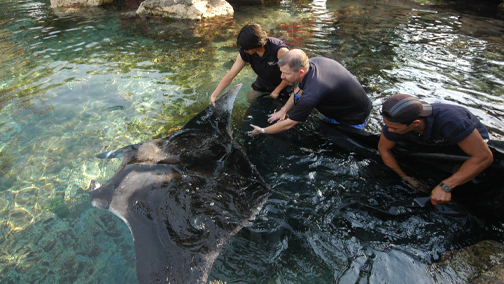
A small Manta Ray is introduced into a 500,000 gallon residential saltwater lagoon.
http://isshamaqua.com/maintenance.html
The owners of these extreme aquariums were extremely meticulous and the aquariums were always spotless and the fish kept in prime condition To ensure the aquariums were kept in perfect condition, we recruited experienced marine biologists from Europe and North America to manage these large aquarium projects and train staff. However, much of the hard work was done by crews of extremely dedicated Asian labourers who are employed by the millions all over the Middle East. These guys would leave their impoverished home countries of Sri Lanka, India and the Philipines in hopes of making money in the Middle East to send home to their families. These smart, hard-working men loved their jobs and were extremely proud of what they did. Having never cared for an aquarium in their lives, many of them developed into talented aquarists with husbandry skills on par with any marine biologist at a public aquariums in the West.
The Finished Product
It is hard to describe the feeling I would get after seeing the completed aquariums for the first time. To this day, I can honestly say that the residential aquarium projects that I was involved in during my 5+ plus years with Issham (3yrs as Director of Operations, 2yrs as Coprotate Curator) were truly some of the most spectacular aquariums on the planet and could compete with the best public aquariums anywhere.

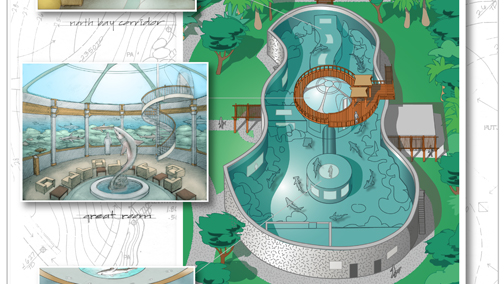
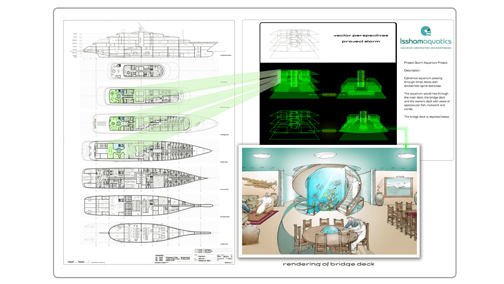
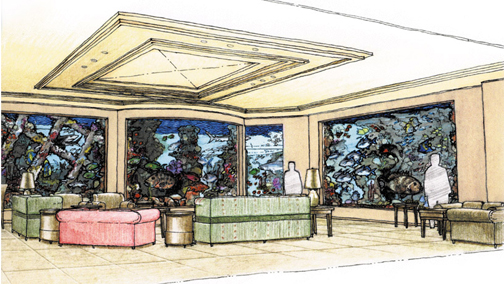
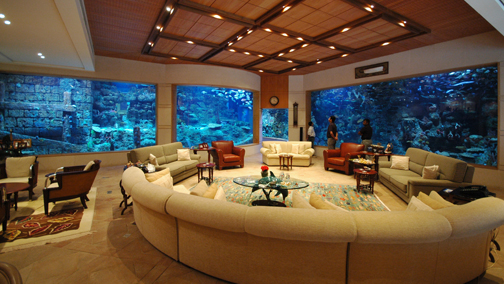
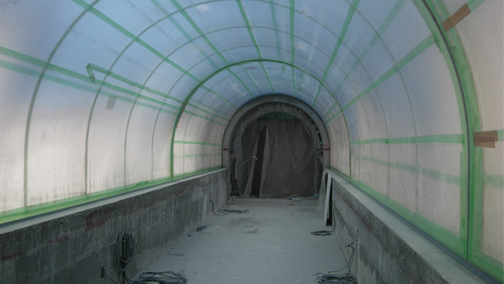
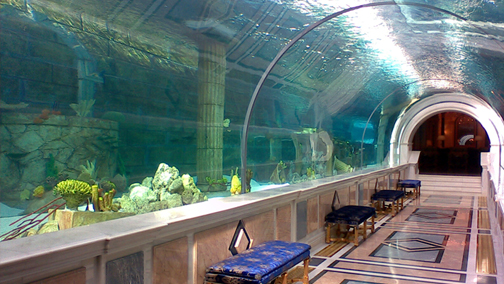
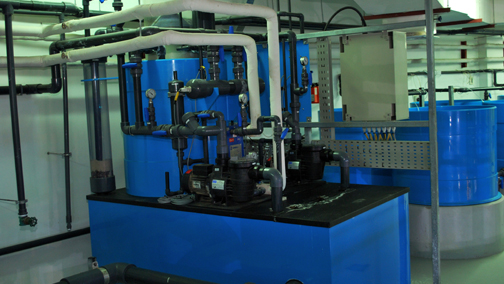
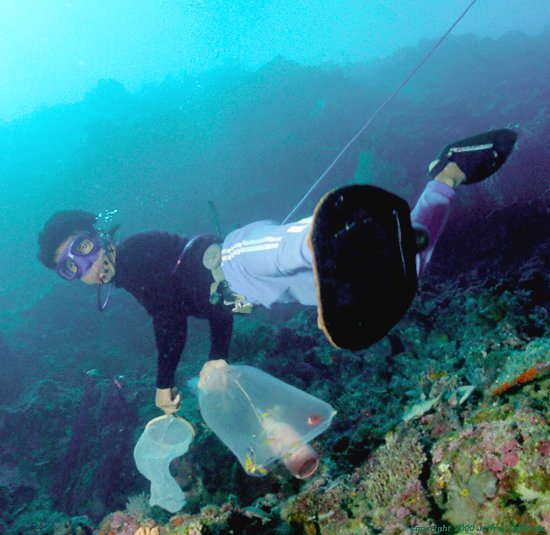
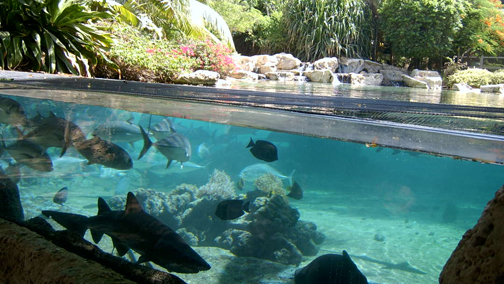
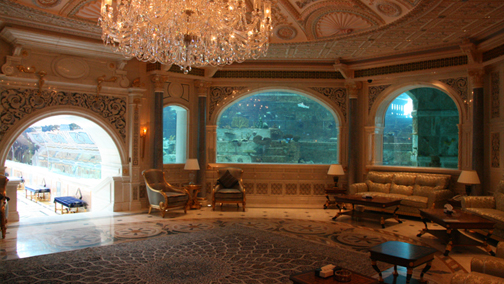
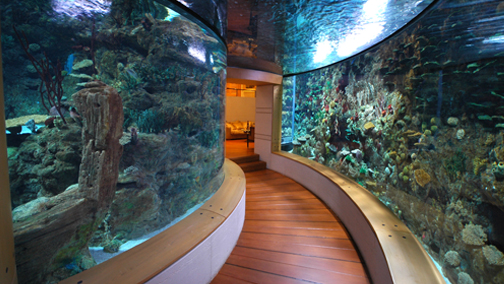
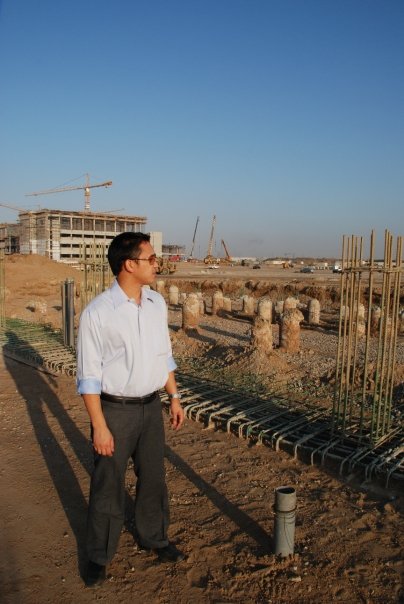








0 Comments